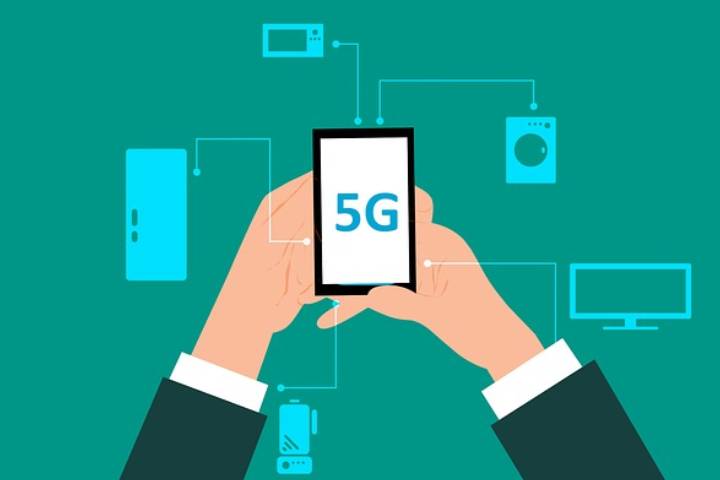The government is discussing the transfer of frequencies used by the military to cellular operators in Moscow to launch 5G networks, Forbes found out. Earlier, the authorities rejected applications from operators even for testing networks in these frequencies.
The Ministry is discussing with the operators the transfer of the 3.4-3.8 GHz frequency range to Moscow, which the military now uses. Forbes was told about this by a source in one of the telecom companies and a source close to one of the cellular operators. A source close to the Ministry of Digital Science noted that negotiations on the possible use of these frequencies in the capital are already underway with the mayor’s office. A source at the Moscow City Hall confirmed that this issue is indeed on the federal plan.
Deputy Prime Minister, Dmitry Chernyshenko’s representative told that the most popular 3.4-3.8 GHz frequency range in the world is not used in Russia for deploying 5G networks because law enforcement agencies actively use it.
An interlocutor of Forbes in one of the telecom companies said that the transmission of frequencies in Moscow could show that the military and operators can work at these frequencies simultaneously without interfering with law enforcement agencies. And also that can implement the project throughout Russia, he added.
Operators have already deployed several pilot zones in the capital for testing 5G – two for VimpelCom and Tele2, one for Megafon. MTS has only 19 pilot zones – in particular, on Lubyanskaya Square, in Gorky Park, on several embankments near Moscow City, etc. In September, the operator built two pilot zones for Sberbank to test compatible smartphones and wireless services in the bank’s ecosystem (for example, uncrewed vehicles).
Earlier, the State Commission on Radio Frequencies has repeatedly rejected operators’ applications to allocate frequencies in this range, even for testing the technology. For example, Freshtel, a subsidiary of Rostelecom, applied to test the operation of a 5G network in the Moscow metro at 3.4-3.8 GHz. Still, in June, the State Commission on Radio Frequencies rejected it. MTS and Megafon submitted similar applications, but they were also not satisfied.
The frequency range of 3.4-3.8 GHz is considered the most optimal for the development of 5G, and it is he who is used for the deployment of new generation networks in most foreign countries. However, in Russia, these frequencies are occupied by equipment for the Ministry of Defense, FSO and Roskosmos. Instead, the Ministry is now proposing to allocate frequencies to operators in 4.8-4.99 GHz.
But operators at the end of 2020, in their report on the comparison of 5G deployments in various bands, noted that the development of networks in 4.8-4.99 GHz “exceeds the investment opportunities of operators”: the cost of owning infrastructure in this range until 2030 in cities millionaires are 2.5 times higher than the ownership of equipment in the 3.4-3.8 GHz range (723.3 billion rubles against 317.1 billion rubles). The document says that the accumulated loss of operators from the use of 4.8-4.99 GHz frequencies by 2030 will amount to 354.3 billion rubles and will grow until 2040.
The allocation of the 3.4-3.8 GHz frequency range for individual regions has already been discussed, but there were no specific plans, says Denis Kuskov, the TelecomDaily analytical agency general director. According to him, the implementation of this idea in Moscow would become a kind of pilot project, which would allow to get the first experience in the implementation and operation of networks at these frequencies, as well as to show their necessity and higher efficiency in comparison with the frequencies of other bands offered to operators.
He noted that LTE will remain the leading network in Russia until about 2025. Still, due to the constantly growing traffic volume, the operators’ capacity will no longer be enough, and this problem is most acute in Moscow.
In October 2021, the general director of “MegaFon” Khachatur Pombuhchan, in an interview with RBC, said that if the operators do not receive the new frequency, the quality of communication in mobile networks fourth generation may deteriorate.
The volume of data consumption in cities is growing by 40-50% per year, and the content itself (applications and videos) is becoming heavier, he noted. Because of this, operators are forced to install more base stations “to reduce the coverage area of each and achieve acceptable quality on it,” but this approach becomes ineffective as a result, Pombukhchan said.
Representatives of MTS and MegaFon declined to comment, representatives of the Ministry of Digital Industry, VimpelCom and Rostelecom did not respond to a request from Forbes.
Also Read: The Greenest 5G Smartphone Is Coming








